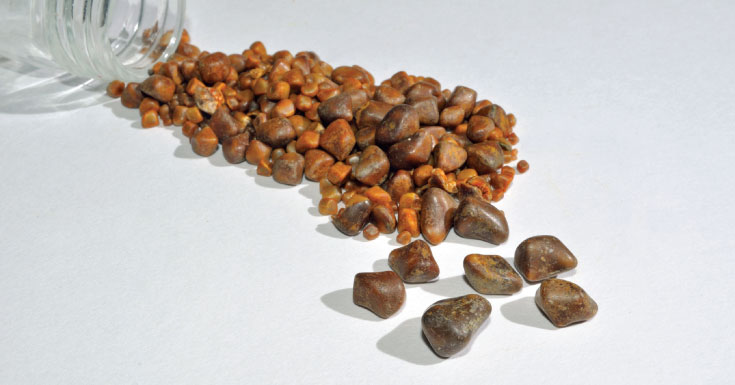What is gallstone disease, and what are the signs and symptoms? How can we treat or manage the condition? In this Q&A, Dr Ahmad Muhsin Mohammad Nor, Consultant General Surgeon at Sri Kota Specialist Medical Centre, answers the important questions surrounding this painful disease.
What is gallstone disease?
Gallstone disease is a condition whereby the bile in the gallbladder (which is normally in liquid form) becomes too concentrated and turns to stone. While this condition affects roughly 10-20% of the general population, most patients do not have any symptoms. However, about 20% of them will develop some symptoms in their lifetime, and between 1-4% of them have recurrent symptoms every year.
Can you share more about the different types of gallstones?
There are two types of gallstones: cholesterol stones and pigment stones. Cholesterol stones are more common, while only about 20% of gallstones are pigment stones. The composition or content of the stones differs between the two.
Cholesterol stones are yellow-green stones that tend to occur in patients with high cholesterol. The condition is also related to age, gender, dietary intake and obesity. On the other hand, pigment stones are black or brown in colour. They are associated with biliary tract (the ducts connecting the liver to the small bowel) infections such as parasitic or bacterial infections or due to certain diseases such as haemolytic anaemia.
What causes gallstone disease?
Gallstone disease occurs due to several causes. Cholesterol stones are formed when there are imbalances in the components of bile due to an increase in cholesterol levels. In contrast, pigment stones are caused by parasitic or bacterial infections or diseases like haemolytic anaemia. Mechanical reasons such as lack of gallbladder contraction can also cause gallstones to form in the body.
What are the signs and symptoms to watch out for?
The first symptom is abdominal pain, especially if the pain occurs on the right upper side of the abdomen. The pain is usually constant and is more intense after the intake of fatty or oily food.
An infection of the gallbladder can cause a patient to have fever on top of the pain. Besides fever, the patient may feel lethargic and experience chills. Some may also experience nausea and vomiting. If a patient has abdominal pain with fever, they should see a doctor and seek treatment immediately.
Another symptom that you need to watch out for is jaundice. Jaundice is a yellowish discolouration of the body, which initially begins with the eyes but eventually spreads to the rest of the body. The patient may experience itchiness due to jaundice. If jaundice occurs, it is a sign of obstruction of the biliary tract and an urgent admission to the hospital for further treatment is required.
Who is at risk?
There are several groups of people at risk of developing gallstone disease. The first risk factor is hereditary (genetic). Certain people are more prone to gallstone disease if any of their close relatives have had the disease.
Other risk factors are age and gender. The older we get, the higher the risk due to the higher amount of cholesterol circulating in our bodies. Women are also more prone to gallstones than men. This may be due to the effect of female hormones. Thus, oral contraceptive pills are a risk factor.
Obesity is also a risk factor. The more obese a person is, the more concentrated the bile and the higher risk of gallstones. People with diabetes mellitus are also at risk due to changes in their cholesterol metabolism and gallbladder functions. Other risk factors include the presence of certain diseases like haemolytic anaemia or inflammatory bowel disease and patients on long-term intravenous nutrition.
Is it a serious condition? What are the complications?
Gallstones may cause severe complications due to several reasons, such as inflammation, infection or obstruction of the biliary tract. One of the most common complications is biliary colic which manifests as constant abdominal pain.
Cholecystitis or an infection of the gallbladder can occur and, if left untreated, can worsen to become a collection of pus in the gallbladder (empyema). This can lead to gallbladder perforation. If that occurs, the patient will be severely ill and needs urgent medical attention.
Other serious complications are jaundice and inflammation of the surrounding organs like the pancreas.
How can we prevent gallstone disease?
You can prevent gallstones by modifying certain risk factors like obesity and cholesterol levels through maintaining a healthy lifestyle and diet. By doing so, you will also lower your risk of developing other contributing diseases such as diabetes mellitus.
How is it treated and managed?
When patients present with symptoms, that will lead to further investigations such as an ultrasound or a computed tomography (CT) scan of the abdomen. Once a patient is diagnosed, the treatment and management of gallstone disease depend on the severity and condition of the patient at that time.
A stable patient who does not show signs of complications such as fever may be managed with analgesics and an elective appointment to remove the gallbladder. However, if there’s a fever, this necessitates more aggressive management to treat the underlying infection. The patient will need hospital admission for commencement of intravenous antibiotics and an operation to remove the gallbladder once the fever and pain subside.
The operation for gallbladder removal is mostly done now via the laparoscopic method with small incisions on the abdomen and insertion of laparoscopic equipment and camera. The wounds are small, and most patients recover within the same day or the day after. A small percentage of patients with more severe conditions will need further care in the hospital for the next few days until full recovery is achieved.
 Dr Ahmad Muhsin Mohammad Nor
Dr Ahmad Muhsin Mohammad Nor
Consultant General Surgeon
Sri Kota Specialist Medical Centre



















